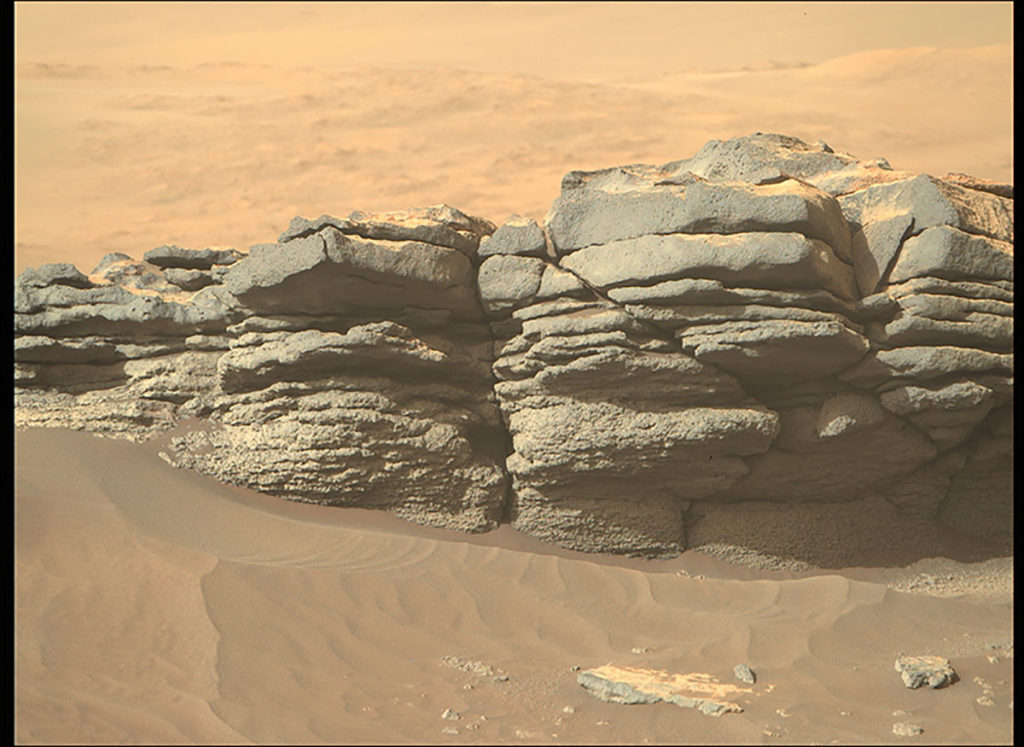As a rule, Mars is represented as a planet that is completely covered with red rocks and valleys of
Perseverance rover discovers Lake in Craterunusual layered rocks. The study showed that these are not sedimentary rocks that scientists expected to see at the site of the alleged ancient lake, but frozen stones of volcanic origin. They are made up of large grains of olivine, a dirtier and less precious version of peridot, which turns the beaches of Hawaii dark green.
 Snapshot of greenish rocks on Mars. Image: NASA, JPL-Caltech, ASU
Snapshot of greenish rocks on Mars. Image: NASA, JPL-Caltech, ASU
The study showed that the stones and lava thatwere found on Mars, about 4 billion years old. Unlike igneous rocks on Earth, they have not undergone significant transformation due to weathering, tectonic processes, and other external influences. Thanks to this, by studying ancient rocks on Mars, scientists can reconstruct the conditions for the formation of minerals in the early stages of the planet's life.
The authors of the work hope that the study of earlyrocks on Mars will help to better understand the origins of life both on the Red Planet and on Earth. The main difficulty in the study of early evolution on Earth is that the conditions that were on the early planet are irretrievably lost, scientists say.
The search for life is one of the main goals of the missionPerseverance and one of the reasons why he landed in Lake Jezero Crater. Finding the potential for a habitable environment, even in aged igneous rocks that are of little use for life, inspires hope that real traces of life can be found in the sedimentary rocks that the rover is starting to explore now.
Read more:
Earth-sized sunspot grows 10 times in 2 days: it is directed at us
This is the "twin" of the Earth in the past: a unique planet-ocean was found not far from us
Einstein was right again: after half a century, physicists proved the stability of black holes